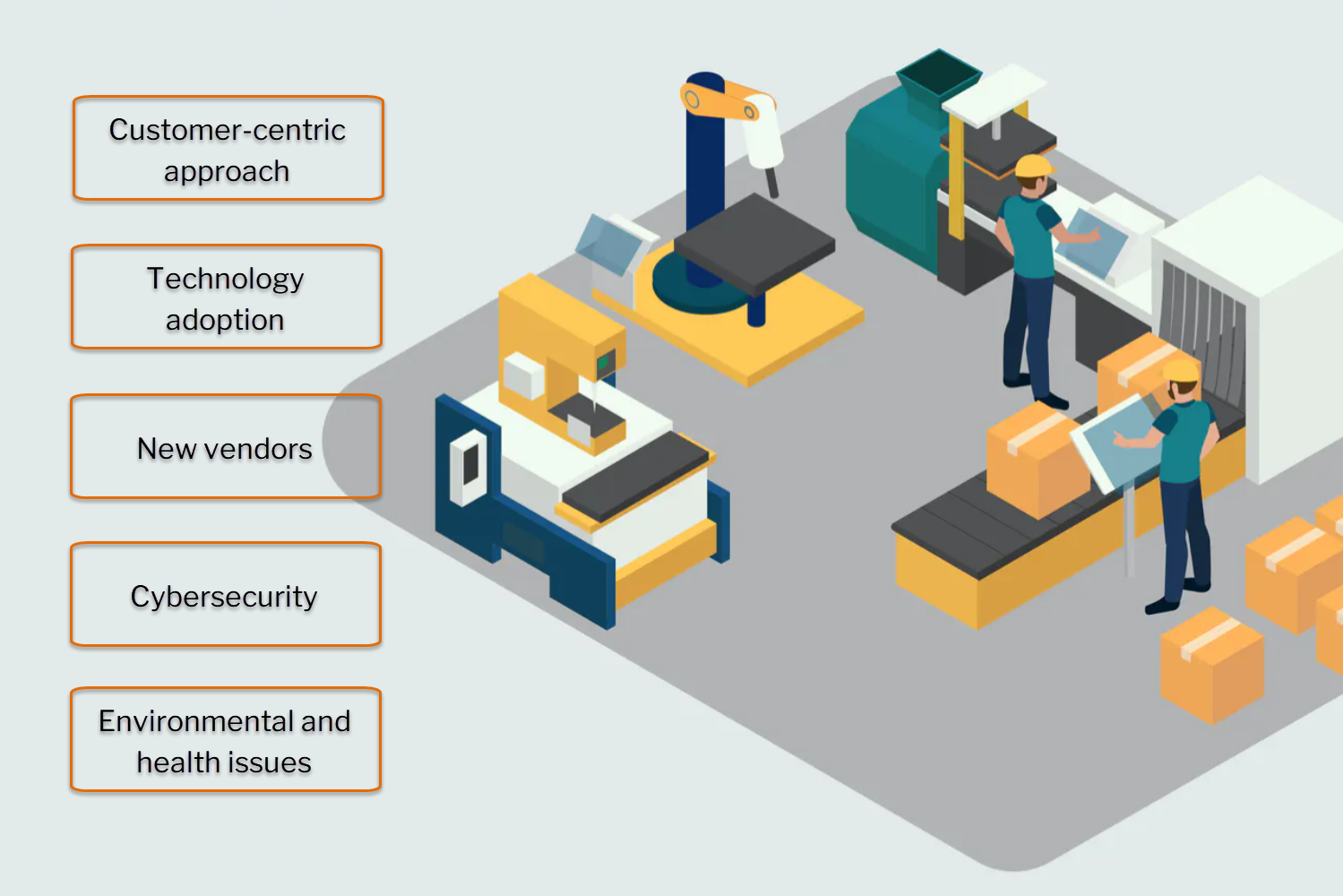COVID-19 pandemic has significantly affected businesses worldwide. Many of them were forced to entirely transform their business priorities and search for new ways of product delivery, promotion or customer acquisition. Manufacturing was simply one of them. How did the industry evolve and what are its priorities in 2021/2022?
Customer-centric approach
In our latest article: 5 Investments of Manufacturing Companies in 2021 we presented a brand new approach to customers. The new trends are obviously enhanced by the pandemic and the rapid development of digital commerce channels. As customer behaviour constantly evolves, especially in COVID-19 and post-covid times, manufacturers need to follow them unstoppably in order to respond to them fast enough.
How do they manage? First of all, they implement modern data collecting tools. By analyzing purchasing decisions and understanding the trends, manufacturers can constantly improve the CX (Customer Experience) of their offer. Thanks to this, they can build customer loyalty, engage new users and ensure a satisfactory income.
Technology adoption
When the whole world went digital in 2020, exactly the same happened to manufacturing. Many companies from the industry were definitely not prepared for such a digital earthquake. The burning need for adoption to new, strange reality forced entrepreneurs to instantly implement and develop online communication channels.
Moreover, the pandemic accelerated the decision to install automation and robotic systems in many cases. In the long term such solutions, already well known in many other industries, can lead manufacturers to much higher efficiency, shorter production process and increased revenues.
New vendors
Supply shortages, delays and increased prices of delivery forced manufacturers to redefine their supply chains and to extend their vendor base. A solid backup in case of emergencies and verifying the capacities of previous suppliers became a must for many. Manufacturers can no longer risk sticking to a limited number of vendors, as it can significantly affect their business. What also counts more than ever, is surely flexibility and adaptability to unpredicted events.
Moreover, the pandemic forced manufacturers not only to search for new vendors but also to implement a consistent plan and reliable technology for supplies monitoring. Many companies have also modernized their supplied chains and started to use prediction models (you will find more information about technologies for manufacturing in our article about Industry 4.0). Also, manufacturers started to use 3D printing for replacing missing parts that can’t be instantly imported. According to the Global Automated 3D Printing Market, the market is supposed to grow at a CAGR by 37% over the forecast period (2021-2026).
Cybersecurity
Building a digital work environment creates a number of opportunities - but also intensifies threats. This is why it requires a brand new approach to data security. According to the Canadian Federation of Independent Business (CFIB), nearly 25% of small businesses have been targeted by cyberattacks since March 2020. Moreover, according to the Cybersecurity Ventures report, the next company falls victim to ransomware attacks every 11 seconds.
The statistics above mean that along with creating a modern work environment, companies need to invest in new cybersecurity prevention measures. This may implicate changes in the organizational structure and hiring new professionals having relevant competencies.
Environmental and health issues
20 years after entering the 21st century, we are facing an ecological crisis. Customers are increasingly sensitive to ecology-related topics and aware that the responsibility for the future of Earth is on manufacturers, especially those operating on a major scale. So, companies from the industry have started to adjust their production standards and processes to new consumer requirements. According to IEB, Decarbonising Europeʼs energy-intensive industries: The Final Frontier, 2016 report, European digital technologies already reduce carbon emission across the continent up to 80% or more compared to 1990.
The pandemic revealed also the negligence of employees’ need for work life balance. When working from home, staff well-being became one of the major challenges. So, except of the industry challenges, manufacturers also need to put more pressure on building a safe work environment and mind employees’ mental health and motivation.

